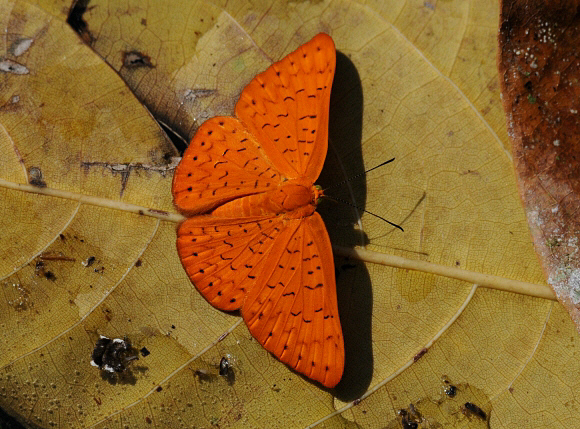 Emesis fatimella, male, Satipo, Peru – Peter Maddison
Emesis fatimella, male, Satipo, Peru – Peter Maddison
Introduction
The distinctive wing pattern and shape of Emesis make them instantly recognisable as a genus, but some of the 41 species can be difficult to tell apart, requiring close examination of the markings.Emesis fatimella is found from Mexico to Brazil and Peru.
Habitats
This species occurs in primary and secondary forest, at altitudes between about 200-800m.
Lifecycle
I have no information specific to fatimella. The eggs of Emesis species are typically white and highly sculptured. They are laid singly or in clusters of up to 30, according to species. The known larval foodplants encompass the families Ranunculaceae, Euphorbiaceae, Rhizophoraceae, Sterculiaceae, Anacardiaceae and Nyctaginaceae.
Adult behaviour
Males can sometimes be seen basking on foliage or imbibing moisture from sunlit trails.
